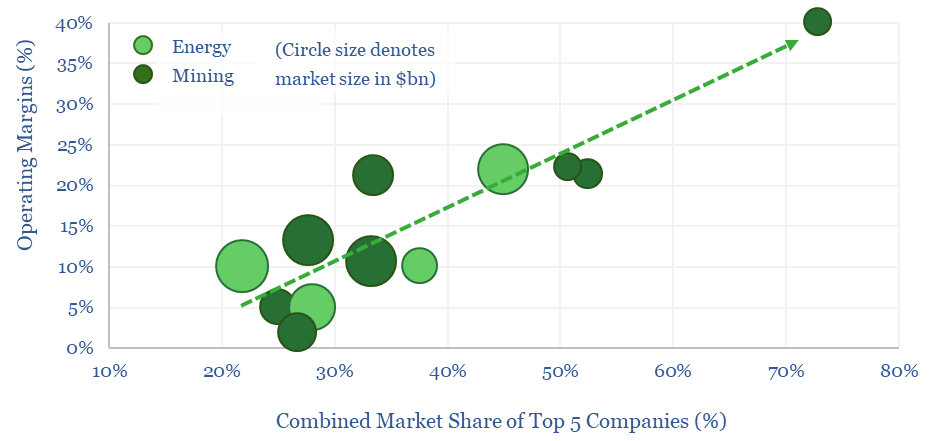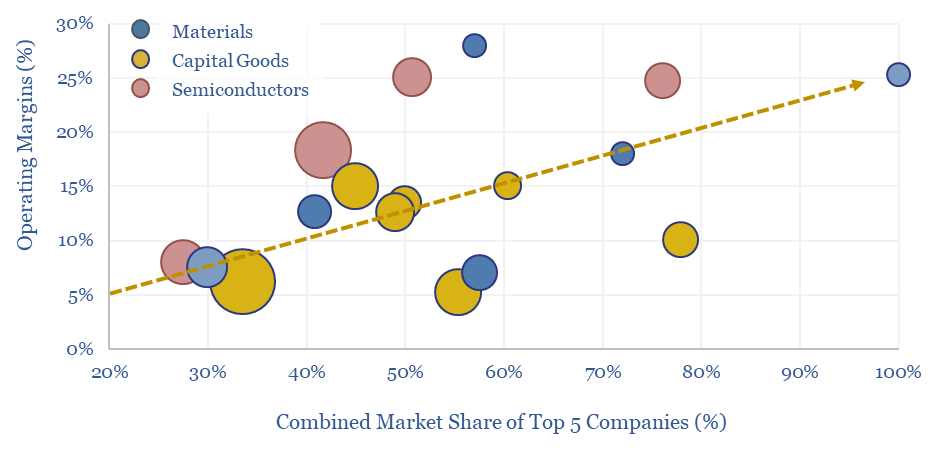What is the market concentration by industry in energy, mining, materials, semiconductors, capital goods and other sectors that matter in the energy transition? The top five firms tend to control 45% of their respective markets, yielding a ‘Herfindahl Hirschman Index’ (HHI) of 700.
This data-file compiles market concentration data across 30 company screens that we have built to-date, across our energy transition research. Specifically, we know the market share of different companies based on these screens.
A useful rule of thumb across the data-set is that the top five firms tend to control 45% of their respective markets, ranging from 20% in the least concentrated industries to 100% in the most concentrated.
The average ‘Herfindahl Hirschman Index’ (HHI) of energy, materials and manufacturing sectors is 700, varying from 200 in the least concentrated industries to 4,000 in the most concentrated ones.
Does market concentration determine profitability? 50% correlations are found between concentration and operating margins over the cycle within these industries.
Energy sectors covered in the database of market concentration by industry include global LNG, US E&P, US refining, Western coal, LNG shipping. Mining sectors covered include aluminium, copper, cobalt, lithium, nickel, uranium, silica and silver.

Materials and manufacturing sectors covered in the data-file include ASUs, autos, battery binders, carbon fiber, gas turbines, glass fiber, hydrogen, methanol, mining equipment, polyurethanes, vacuum pumps, VFDs, wind turbines, and different grades of semiconductors.

Energy and mining are less concentrated than materials, capital goods and semi-conductors, in-line with the idea they are ‘commodities’.
The data-file also covers market size, which itself correlates both with market concentrations and profitability structures. Although we also maintain a larger database for market sizing in the energy transition.
Market concentration matters for decision makers in the energy transition. Hence we have written a research report spelling out seven useful rules of thumb that are based on this data-file. We will continue expanding the data-file over time for TSE clients.
